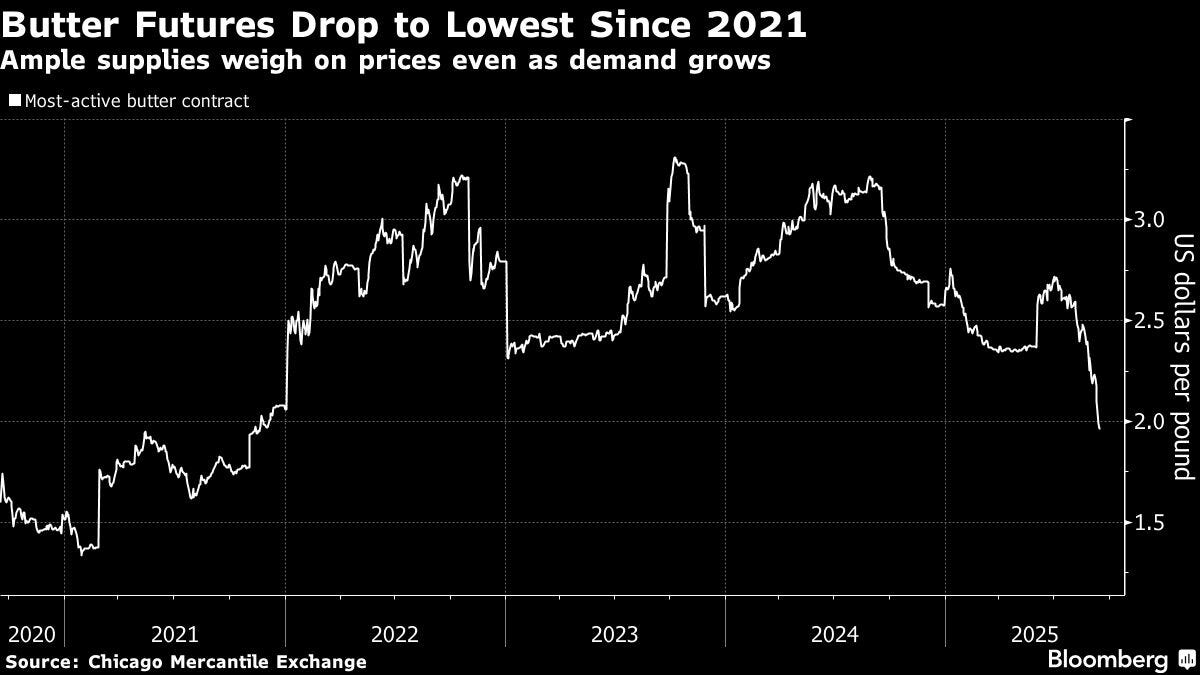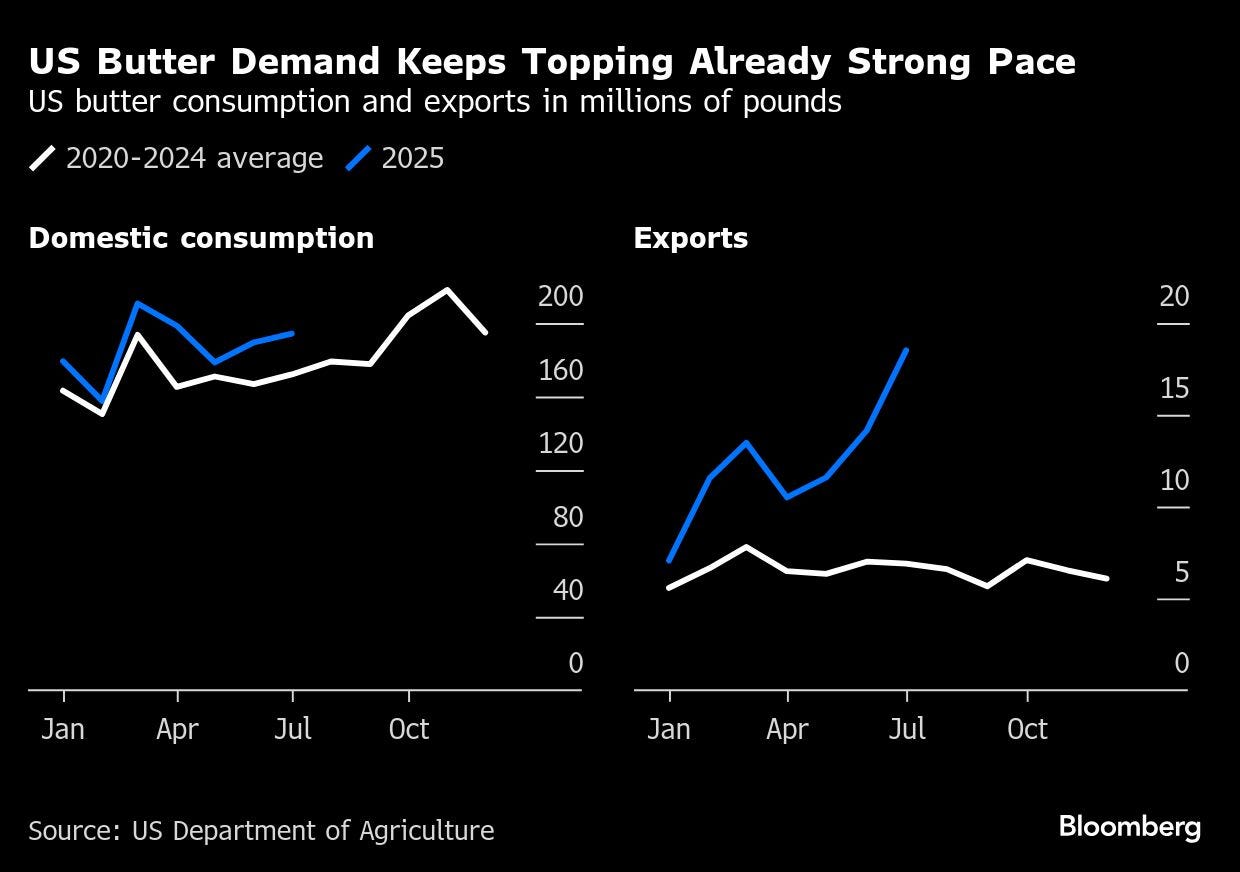As America’s appetite for butter grew over the past few years, the dairy industry turned to cows that produce fattier milk and expanded facilities to meet the demand. They might have gone too far.
US butter prices have plunged to the lowest in more than three years as near-record seasonal production raises concerns of a butter glut even with ample demand. Butter futures traded in Chicago on Monday touched the lowest price since November 2021, and contracts for the kind of milk used for butter have dropped similarly.
“This isn’t a demand issue,” said Corey Geiger, the lead dairy economist at farm lender CoBank ACB. “It’s clearly a ‘We’re supplying way too much.’”
Prices have plunged about 28% since July, the same month production topped 180 million pounds — the highest for that time of year in data going back to 2011, according to the US Department of Agriculture.
The sharp correction comes after several years of strong prices as demand resurged once restaurants reopened following the pandemic. US consumers also have been increasingly eating — not drinking — their dairy and turning back to saturated fats, a shift that’s gotten a boost from Washington’s Make America Healthy Again movement, which has pushed for more fat in milk.

Dairy producers and processors have met the moment.
Darigold Inc. in June opened the largest dairy processing plant in the Northwest, using as much as 8 million pounds of milk daily for butter and other powdered milk products. Farmers, who fetch more money for fattier, high-protein milk, maximized fat content, too.
That helped lead to an oversupply of milk cream in the spring, especially as food service demand for the product went down, said Nate Donnay, the director of dairy market insight at StoneX Group Inc. Still, there are concerns the downturn has been overdone as demand has largely held.
“There’s more cream available, so there’s more butter production,” Donnay said. But, “we’re clearing all that butter.”
Domestic disappearance — a proxy for consumption — has remained far above average and only in July fell short of last year’s levels, USDA data show. Ample supplies also have made butter so cheap that the US is shipping even to butter producers in Europe.
Shipments of about 87 million pounds as of July already are 24% above all of 2024’s quantity, according to the USDA. The most active butter futures contract’s Relative Strength Index — a key technical indicator — has also dropped into oversold territory, signaling that prices may have fallen too far, too fast.

Not all butter is created equal. Stockpiles of American-style butter are growing, but European-style butter that is unsalted and fattier has been falling short of export demand, according to the USDA. Premium butter, especially imported Irish Kerrygold products, is a “whole different thing” that has boomed in the US due to separate demand drivers, Donnay said.
Still, prices are likely to remain at these levels into 2026, with production slated to keep growing as consumption cues remain mixed, said Lucas Fuess, a senior dairy analyst at Rabobank. Fast-casual demand including for pizza has been weak, and the US export boom has been driven more by a cost advantage than a sizable increase in global buying, he said.
The weakness in butter prices could signal more concerns ahead for the dairy industry, with cheese and fluid milk prices under pressure too, said Mike McCully, the president of McCully Consulting. Milk production has held strong for years and with this year on track to be even better, the market has “reached the tipping point in the last several months,” McCully said.
“The first month, it’s not a surplus. The second month, the third month, the fourth month — after a few months, it finally actually starts to build up,” McCully said. “That’s the realization right now in the dairy market here in the US.”
© 2025 Bloomberg L.P.